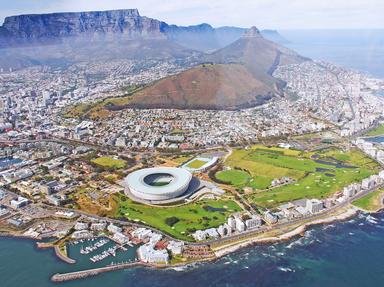Quiz Answer Key and Fun Facts
1. What was the Rivonia Trial?
2. Who were the Presidents of the independent Boer Republics before and during the Second Anglo-Boer War?
3. When was the Battle of Blood River fought?
4. When did apartheid come to an end in South Africa?
5. What happened on 16 June 1976?
6. Who was the Prime Minister of South Africa form 1958 until 1966?
7. When did the Union of South Africa become the Republic of South Africa?
8. What was the official flag of the Zuid-Afrikaanse Republiek from 1858 until 1902?
9. From which prison was Nelson Mandela released in 1990?
10. Of what was Albert Luthuli the president?
Source: Author
athenaminerva
This quiz was reviewed by FunTrivia editor
bloomsby before going online.
Any errors found in FunTrivia content are routinely corrected through our feedback system.


